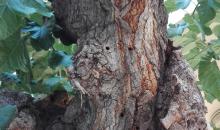Xylotrechus chinensis(XYLOCH)
Photos
For publication in journals, books or magazines, permission should be obtained from the original photographers with a copy to EPPO.
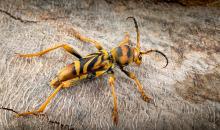
Adult Xylotrechus chinensis detected in the region of Heraklion (Kriti, Greece)
Courtesy: Leivadara et al. 2018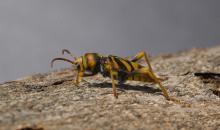
Adult female X. chinensis
Courtesy: Victor Sarto i Monteys Institute of Environmental Science and Technology (ICTA), Spain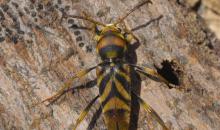
Adult female X. chinensis
Courtesy: Victor Sarto i Monteys Institute of Environmental Science and Technology (ICTA), Spain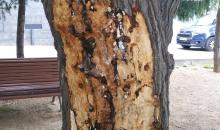
Larval galleries of X. chinensis on Morus trees (bark removed)
Courtesy: Àngels Blanquez (Ripollet municipality, Spain)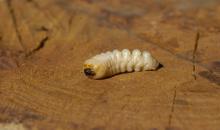
Last instar larva of X. chinensis (extracted from its cavity)
Courtesy: Victor Sarto i Monteys Institute of Environmental Science and Technology (ICTA), Spain
X. chinensis larva within its feeding cavity in the phloem of a mulberyy tree trunk (bark removed)
Courtesy: Victor Sarto i Monteys Institute of Environmental Science and Technology (ICTA), Spain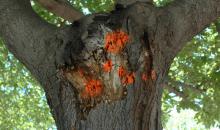
Exposed xylem sapwood beginning to dry and crack after heavy damage by X. chinensis larvae
Courtesy: Victor Sarto i Monteys Institute of Environmental Science and Technology (ICTA), Spain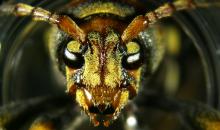
Head of male adult X. chinensis (note the widely separated antennae)
Courtesy: Victor Sarto i Monteys Institute of Environmental Science and Technology (ICTA), Spain
Adult emergence holes of X. chinensis in an heavily infested mulberry tree
Courtesy: Victor Sarto i Monteys Institute of Environmental Science and Technology (ICTA), Spain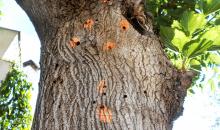
Adult emergence holes of X. chinensis in a heavily infested mulberry tree
Courtesy: Glòria Torras i Tutusaus (Ajuntament de Barberà del Vallès, Spain)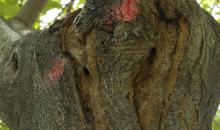
Mulberry trunk with detached periderm showing consumed and dead phloem as well as adult emergence holes
Courtesy: Victor Sarto i Monteys Institute of Environmental Science and Technology (ICTA), Spain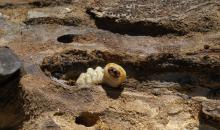
Larva of X. chinensis in a mulberry trunk
Courtesy: Victor Sarto i Monteys Institute of Environmental Science and Technology (ICTA), Spain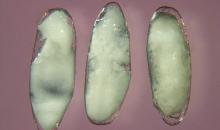
Eggs (unfertilized) of X. chinensis showing the oocyte mass protected by a transparent chorion
Courtesy: Victor Sarto i Monteys Institute of Environmental Science and Technology (ICTA), Spain

